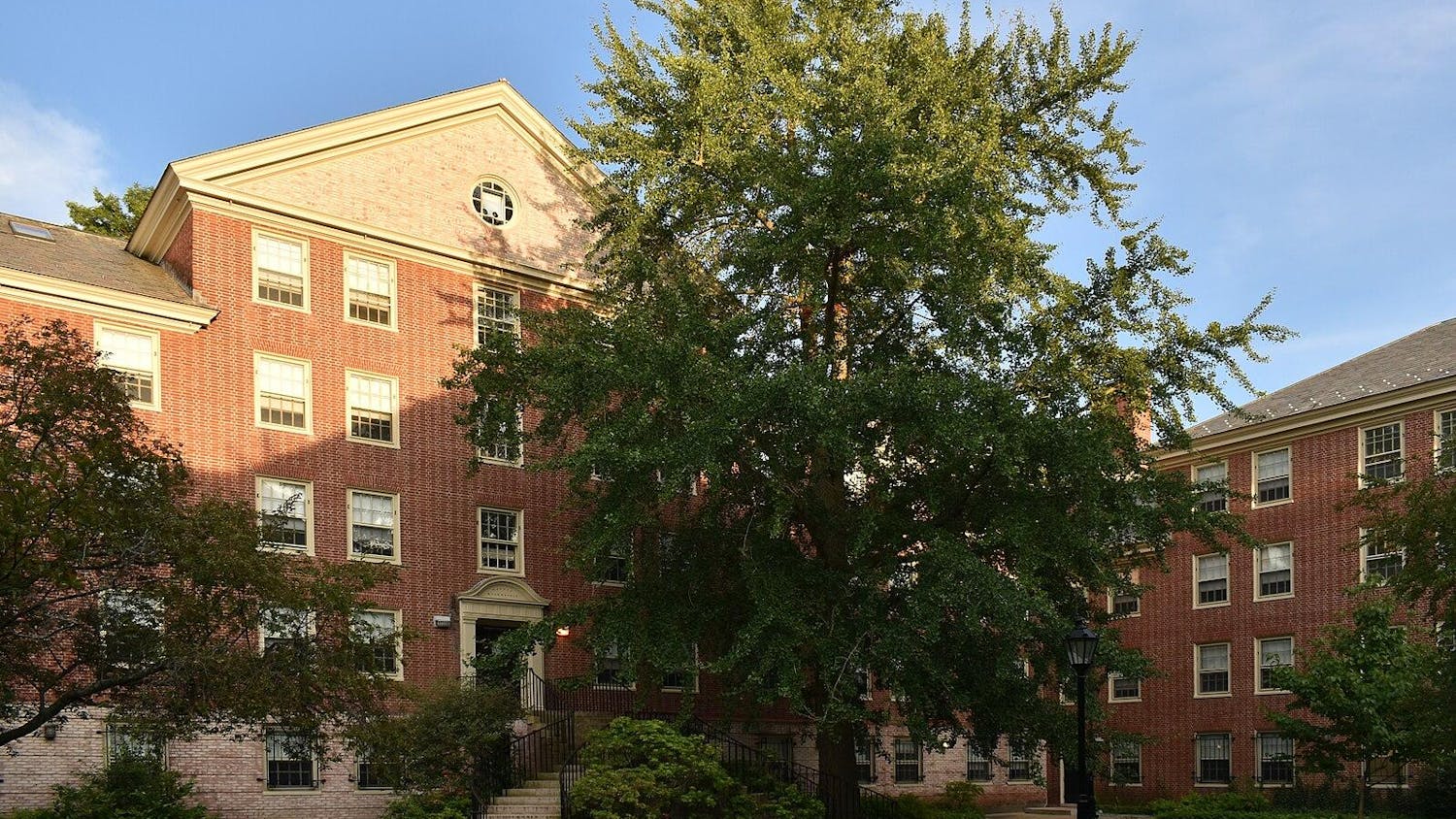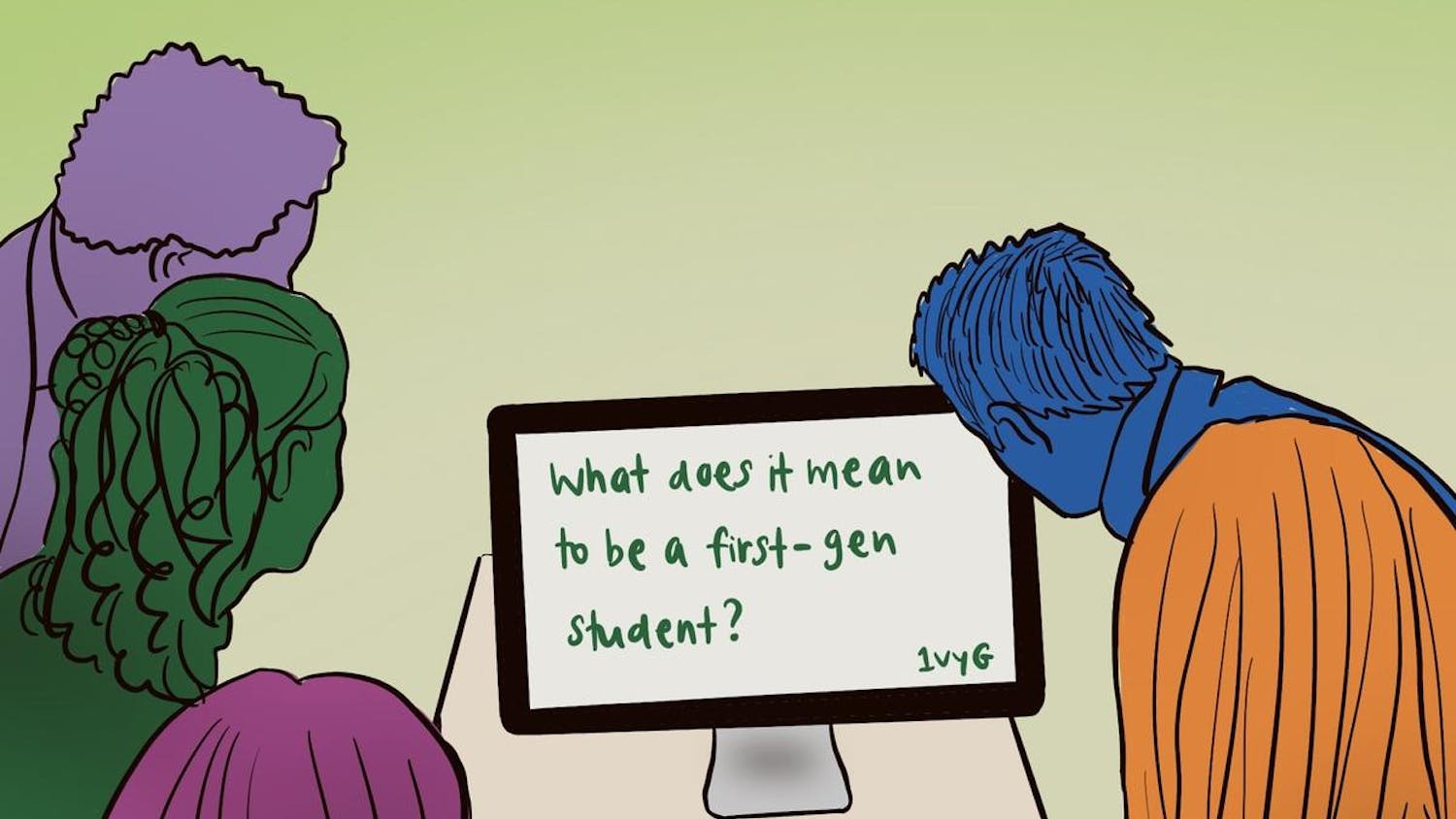Male professors at Brown were paid on average $14,841 more than their female counterparts in the 2013-2014 academic year, according to aggregated data recently released by the Chronicle of Higher Education.
It is “not incorrect to say that there is a gender gap,” said Dean of the Faculty Kevin McLaughlin P’12. The data reflects a higher number of male professors who are in high-paying fields such as the physical sciences and economics or who have remained in their positions for many years, he said.
“It’s not that women are underpaid; it’s that they aren’t in the fields that are higher paid,” McLaughlin said. In science, technology, engineering and mathematics fields, women are still considered an underrepresented group, he said.
But female full professors in the humanities and the social sciences make less than their male counterparts, said Joel Revill, associate dean of the faculty.
Among Ivy League institutions, the average faculty salary gender gap is $16,335, according to the Chronicle data. Dartmouth has the highest discrepancy, while Cornell boasts the lowest. Other schools do not have this gap — at Bryn Mawr College, a women’s college, female professors on average make more than their male counterparts.
Unequal representation
Women make up 33 percent of the Brown faculty, and the largest gender disparity is in full professors — 286 men and 94 women held that rank in the 2014-15 academic year, according to the Office of Institutional Research.
Some divisions are closer to gender parity than others. In 2014-2015, the humanities division was split 53 percent male and 47 percent female, and the average professor salary was $152,000. In the physical sciences, the faculty was 85 percent male and 15 percent female, and the average professor was paid $185,000.
When a discrepancy persists among men and women who have held similar positions for a comparable number of years, the Office of the Dean of the Faculty investigates these cases on an individual basis and then takes the appropriate corrective measures, Revill said.
The lack of women in certain departments is a separate issue, said Thomas Roberts, chair of the Faculty Executive Committee. “We need to improve representation on our faculty of women,” he said.
“The turnover of academic positions is extremely slow compared to any other industry,” Revill said. While it would be “great” if the faculty had equal gender representation, the University is not currently trying to “fix” the unequal representation except for hiring both male and female faculty at an equal rate, he said. At Brown, men typically stay in associate professorships for fewer years than women and are more quickly promoted to full professors, he added.
Women may stay as associate professors longer due to familial commitments, said Karen Newman, professor of comparitive literature and English. “Women do … extend their time to have children,” she said.
The fact that women spend on average more years as associate professors is a “big problem,” said Professor Emerita of Biology Anne Fausto-Sterling, noting that it means working longer or retiring in a lower income bracket for some women. “It may be another 30 years of life living at a financial disadvantage compared to male colleagues,” she added.
Sexism and salaries
“There is still sexism out there,” Roberts said.
“It is something we have to be aware of and careful to monitor whether we have a gender bias in how salaries are set,” Roberts said, adding that efforts should be made to determine whether the salary discrepancy by gender is a “specific bias” or due to other factors.
Reflecting on her own experience, Fausto-Sterling said while she would “march into the dean’s office and say, ‘What the hell, rattle the cages’” before getting a raise, asking for one took “emotional energy.” She added that having regular departmental reviews might be a solution to explore.
Gender bias may also influence a myriad of factors that affect hiring decisions, tenure review and promotion processes. A candidate’s research productivity is one aspect of evaluation, and success is often measured in how many times a scholar’s work is cited. But studies have shown that both men and women cite women’s research less.
Other evaluation materials such as letters of recommendation may also contain gender bias. “We also have to be careful when we get letters from outside the University,” McLaughlin said.
Leveling the playing field
Some institutions of higher education have implemented trainings for hiring committees, including methods such as Implicit Association Tests that allow members of these committees to discover biases they may hold.
The University does not have mandatory Implicit Association Tests, but “it is a best practice that we encourage in our faculty search guide,” Liza Cariaga-Lo, vice president for academic development, diversity and inclusion, wrote in an email to The Herald.
Small environmental changes such as joint evaluation can help create equal opportunity for men and women applying for academic positions, according to research done by Professor of Public Policy at the Harvard Kennedy School Iris Bohnet.
But hiring practices are also influenced by candidates’ behavior. Women negotiate less when they are offered jobs, and when they do assertively advocate for themselves, they are viewed as pushy, according to several studies, including a 2013 study conducted by researchers from the University of California at San Diego and the University of Wisconsin.
Competing job offers enter into the equation of determining salary as well. Studies have found that men are more likely than women to apply for jobs in an attempt to receive a retention offer in the form of a higher salary or added benefits.
Studies have attributed this trend to the higher loyalty of women, the greater likelihood of women to settle in a location for family reasons and lower levels of self-assertiveness in women.
“It’s always better if you can point to other options as leverage for negotiating,” McLaughlin said.
‘Getting better’
Over the last three years, 43 percent of new starting faculty members were women, Revill wrote in a follow-up email to The Herald. But of the 26 new starting faculty members in the physical sciences, only 8 were women, he wrote, adding that this number must be judged in relation to the candidate pool.
“I see no evidence that Brown isn’t treating fairly every faculty member regardless of their gender in terms of pay,” Newman said.
“I think things are getting better,” McLaughlin said.
Women continue to be underrepresented in STEM across the country, including in rapidly emerging fields such as nanotechnology and synthetic biotechnology. “Women are underrepresented; even though these are new fields and there hasn’t been time to leave them out, they haven’t been included as they are growing,” said Sangeeta Bhatia ’90, a professor at the Massachusetts Institute of Technology, at a panel on campus last spring sponsored by the Pembroke Center for Teaching and Research on Women entitled “Tenure, She Wrote: Women in the Academy.”
“If you really wanted to change things, you need more girls going into the STEM disciplines,” Newman said, adding that this would give universities more “PhDs to choose from to populate these fields that have been dominated by men in the past.”
The University implemented an Affirmative Action Monitoring Committee in the 1970s that existed until 1992. It was instituted as a result of the Lamphere v. Brown class action lawsuit filed against the University in 1975 after Louise Lamphere, the only female professor in the anthropology department, was denied tenure.
Today, a University Advisory Council on Diversity conducts reviews of data on the hires of women and minority faculty members, Cariaga-Lo wrote.
“The University is supposed to make an extra effort to make sure women and minority groups have access to these positions by short listing and interviews,” McLaughlin said.
In addition, the University’s Target of Opportunity program bypasses traditional searches and allows departments to hire individuals who would “add extraordinary value to the University,” according to the University’s website. Within STEM fields, the program is “primarily intended for recruitment of underrepresented minority faculty and women,” Revill wrote. There are currently 25 positions, each with a five to six year duration, and they rotate around different departments, Revill said, adding that the University hopes to expand the Target of Opportunity pool under the operational plan.
The Title IX Office, which was established to uphold federal law against gender discrimination in institutions receiving federal funding, declined to comment for this story.




